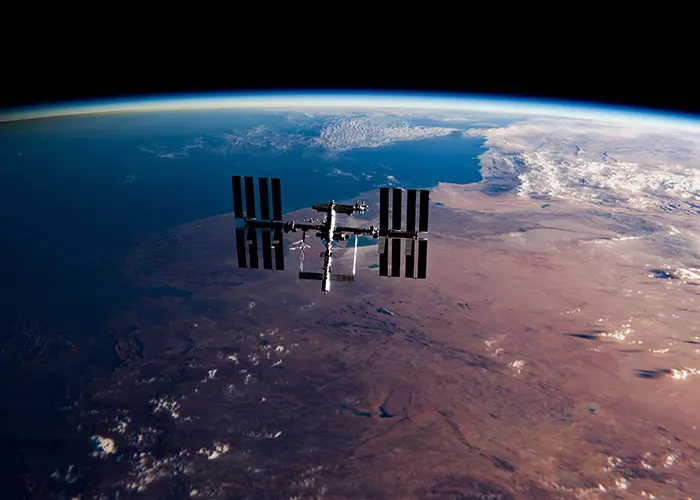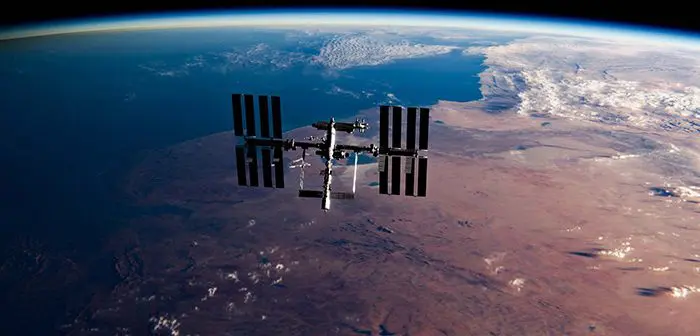
An ambitious new project, launched by the European Commission and supported by the Quantum Flagship, is set to transform Earth monitoring by providing more accurate data on changes in ice melt, groundwater depletion, and ocean circulation.
Called CARIOQA-PMP, the new EUR17 million project seeks to improve traditional gravity-sensing methods by incorporating quantum sensor capabilities.
This research marks a critical step towards future space missions that will track subtle changes in Earth’s gravity field. These advanced tools will offer a sharper view of our planet’s changes, providing more accurate data on glaciers, sea-level rises, and variations in groundwater levels with greater precision and urgency. Being able to measure tiny differences in gravity helps reveal the presence of underground water, how much ice is melting in polar regions, or even find natural resources.
The CARIOQA consortium is working to improve gravity mapping by exploiting the exquisite sensitivity of quantum accelerometers, generating a higher-resolution gravitational map of the Earth.
Materials on the Earth, like rocks, minerals and water, have different densities from place to place. The Earth’s gravity field is affected by the mass of these materials. The more mass in an area, the stronger the gravitational pull in a particular spot. When large masses move or change, such as ice melting and flowing into the ocean, or when groundwater is depleted, it changes the local gravity.
Traditional gravity mapping can detect these differences, which can tell us important things, like where underground water might be, how much ice is melting in the polar regions, or even help in finding natural resources.
But, looking at the Earth from outer space, the picture of gravity is somewhat unclear. While very advanced, traditional gravimeters struggle with weak gravitational signals from Earth when trying to measure fine-scale variations across different regions.
However, this new and improved quantum accelerometer will be the first of its kind to enhance its capabilities using quantum physics. This tool will enable scientists to see a complete gravity map of the Earth in a much higher resolution.
“Traditional gravimeters, or classical electrostatic accelerometers, have some limitations in sensitivity and precision,” said CARIOQA-PMP Project Coordinator Christine Fallet. “However, they provide information that allows us to detect major ocean currents from Earth. Smaller or more subtle features might not captured with enough detail or be missed completely. This is not satisfactory for accurate earth monitoring and studying the smallest changes in gravity caused by subtle shifts like small amounts of ice melting or minor groundwater depletion.”
“The goal of the CARIOQA project is to develop groundbreaking quantum space-borne accelerometer technologies that can transform satellite-based Earth science,” added Fallet. “These advancements are set to play a pivotal role in monitoring climate change and supporting global efforts in developing mitigation and adaptation strategies.”
The new CARIOQA quantum technology is still in development, with the team employing a technique called cold atom interferometry (CAI). CAI relies on the principles of quantum mechanics to examine and exploit the wave-like behaviour of atoms at extremely low temperatures.
When atoms are cooled to near absolute zero, they move almost in slow motion, allowing for extremely precise measurements with lasers.
“When cooled,” Fallet said, “the atoms’ wave-like nature can be exploited to create interference patterns (similar to ripples in water overlapping). By analysing these patterns, we can measure the atoms’ acceleration with great precision.
Cold atom interferometry avoids some problems of older systems, producing clearer and more reliable data over time. When it comes to measuring gravity, CAI is like upgrading from a blurry old TV to a crystal-clear HD screen. This technology will give us a much sharper view of what’s happening to our planet.
The project comes in two parallel parts: CARIOQA-PMP (Pathfinder Mission Preparation) is focused on developing quantum accelerometry technology for use in space within the next decade. This project will lay the groundwork for the Quantum Pathfinder Mission, with CARIOQA-PHA continuing the effort to demonstrate the feasibility of a Quantum Space Gravimetry Pathfinder Mission, aiming to enable the deployment of quantum gravimeters and accelerometers in space by the European Union.
“This undertaking aims to provide a powerful tool for Earth observation,” said Fallet. “It is a critical step for the European Union to establish itself as a leader in quantum space technology. The success of CARIOQA could position Europe at the forefront of global efforts to combat climate change while simultaneously showcasing the power of quantum technology in addressing one of the most pressing challenges of our time.”
CARIOQA brings together a consortium of key partners, including the French Space Agency; the German Aerospace Center; industrials such as Airbus Defence and Space in both France and Germany, Exail, Teletel, and Leonardo; European laboratories and universities; and experts in impact maximisation.





